Konica Minolta Dimage X1 Review
Konica Minolta Dimage X1 Review
The Dimage X1 is tiny, stylish and sports a huge 8 megapixel CCD - could it be the best compact digital camera out there?
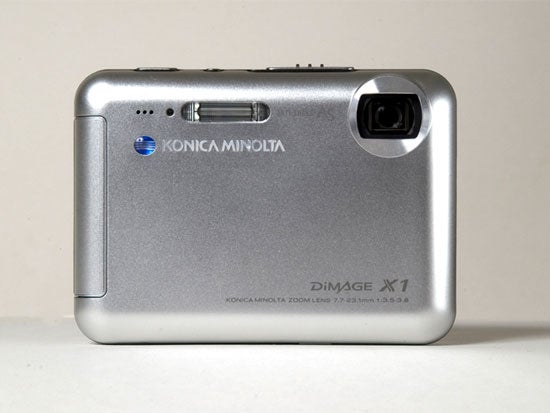
Verdict
Pros
Cons
Key Specifications
- Review Price: £257.00
Konica Minolta’s Dimage highly successful X-series represents the original ultra-compact digital camera range. When the first of the line, the 1.9 megapixel Dimage X, was launched in early 2002, it was by far the smallest and lightest digital camera on the market, and also had one of the fastest start-up times. It achieved both of these feats thanks to an innovative lens design.
Related: Origin Stories: how Minolta pioneered the Huawei P30 Pro’s periscope zoom in 2002
The 3x optical zoom lens was mounted vertically completely inside the camera body, looking at the outside world via a 90-degree reflecting prism, in the manner of a submarine’s periscope. This meant that the camera could be much thinner – just 20mm – than contemporary models with conventional lenses, and without the delay of extending a long zoom lens it could be ready to take a picture in just 1.8 seconds, which at the time was unbelievably fast and is still pretty respectable today. There have been eight further models in the series, all sharing the same basic core technology.

The latest addition to the X series is this, the X1, and as its numeral would suggest, it represents something of a re-launch for the line. After the competent but rather pedestrian X50 and X60 models, the X1 also represents a return to the spirit of innovation and style that made the series successful in the first place.
The innovation comes in two parts; a highly effective anti-shake system that allows hand-held shooting at shutter speeds as low as 1/6th of a second, and an impressive 8 megapixel CCD – unprecedented in a camera this small. Measuring 95 x 68 x 19.5mm, the X1 is shorter and thinner than the original Dimage X.
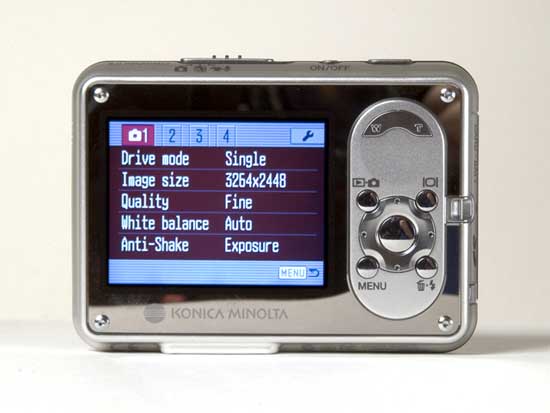
The new style is immediately apparent from the pictures accompanying this review. Everyone who has seen this camera while I have been testing it has commented on how good it looks. The X1 is available in three coloured finishes; an attractive wine red, a stunning gunmetal black and the satin-finish silver version pictured here. The all-metal case is has a futuristic rounded capsule-like design that slips easily into a shirt pocket, with a metal cover over the lens and a flat one-piece rear panel covering the big 2.5in, 118,000-pixel LCD monitor. There are indicator lights concealed behind the mirror finish of the rear panel, and the minimalist control layout is both attractive an easy to use. It’s an extremely pretty camera, although the glossy finish does show up fingerprints, so you’ll be polishing it a lot.
With a list price of £299, but available for around £256, the X1 is quite expensive for a compact, even one that looks this good, but it does offer a lot of shooting power for your money. Although there are several 8 megapixel compacts on the market the X1 is by far the smallest. It is also the smallest camera to be equipped with anti-shake technology, which is more usually found on cameras with longer lenses.
Obviously designed primarily as a social camera, the X1 doesn’t offer much in the way of manual options, but the controls for quick day-to-day shooting are effective and easy to use. The camera has two main shooting modes, controlled by a slider switch on the top plate. Normal mode is full auto, with exposure compensation adjusted by the up and down directions on the D-pad and white balance, ISO sensitivity, metering options and drive mode altered via the menu.
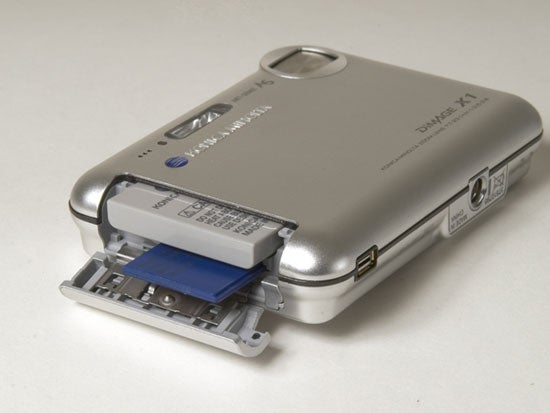
In the other, simpler shooting modes, left and right on the D-pad give access to scene modes including portrait, landscape, 5cm super macro, sunset, night scene and night portrait and text mode. In this mode the menu system is hardly needed unless you want to change the image size/quality or the drive mode. Once the camera is set up the way you like it you can forget the menu and just use the scene modes.
In use the X1 performs well, although the position of the lens makes it very easy to get your finger in the shot when using it two-handed. The camera starts up extremely quickly in under a second, and the monitor screen is large, bright and easy to see in most lighting conditions, although the highly polished surface of the rear panel does lead to annoying reflections making the screen difficult to see in bright sunlight. Fortunately increasing the screen brightness compensates to some extent.
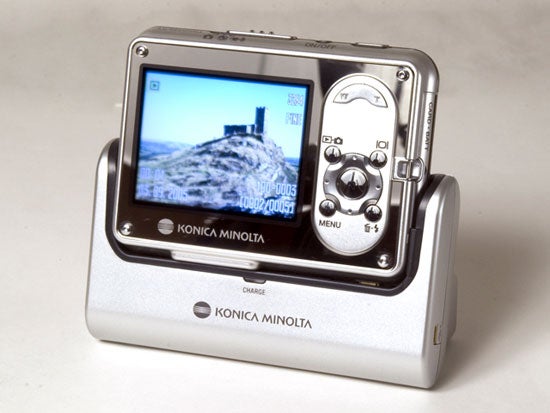
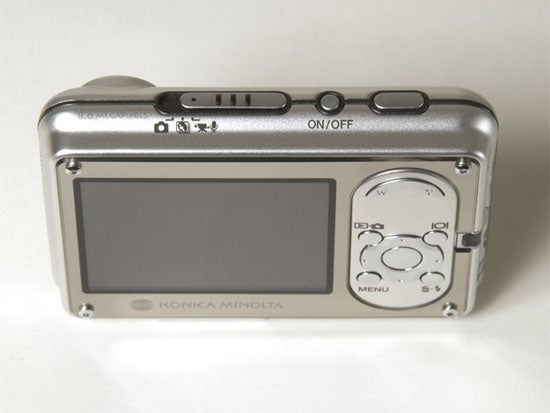
The autofocus system is not the camera’s strongest point. Taking around half a second to lock on in normal light it is a little slow compared to some rival models. It gets even slower in low light, and frequently won’t lock at all. Since it is possible to take a picture without a focus lock, this result is some disappointing out of focus low light shots. Considering that the camera’s primary use will most likely be social photography at parties, this below average low light performance could be a real handicap.
Automatic white balance also seems to have a bit of a problem. It has a disturbing tendency to over-compensate for strong colours in an image, so for example in an image containing predominantly blue tones the camera will add a strong red tint to try to compensate for the blue. It is possible to get round this by using the manual white balance settings, but these are not available in the scene mode option.
Other than that, image quality is very good. In normal light, colour reproduction, dynamic range and contrast are excellent, and the level of detail available with the huge 8MP images is incredible. Exposure and focusing are very accurate, and I was particularly impressed by the macro performance. Image noise is well within acceptable limits, although it does creep into darker areas at the maximum 200 ISO.
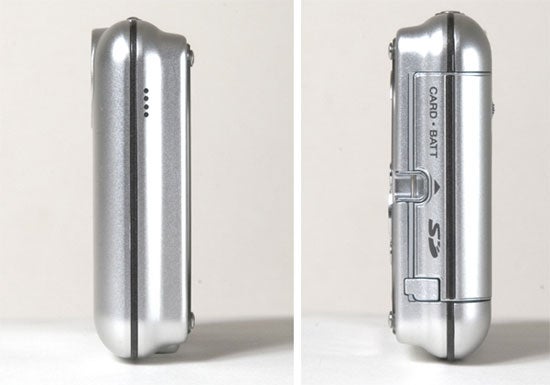
Flash range is a competent five meters, but the low-light focusing problems will limit its usefulness. The only gripe is a small amount of lens distortion in the corners of the frame at wide angle, and some minimal blue fringing on very high contrast edges, but neither of these problems are particularly serious, and overall image quality is very good.
”’Verdict”’
The Dimage X1 is a camera for those who appreciate style and innovation and are prepared to pay a premium to get it, especially if they don’t want to be bothered by a lot of technical details but still want good picture quality. It is compact, very easy on the eye, and the anti-shake system and 8MP CCD ensure good results under most normal circumstances. Problems with low-light focusing may limit its usefulness as a party camera, but other than that it performs very well.
(table:features)
A range of test shots are shown over the next three pages. Here, the full size image has been reduced for bandwidth purposes, and a crop taken from the original full resolution image has been placed below it in order for you to gain an appreciation of the overall quality. The following pages consist of resized images so that you can evaluate the overall exposure. For those with a dial-up connection, please be patient while the pages download.
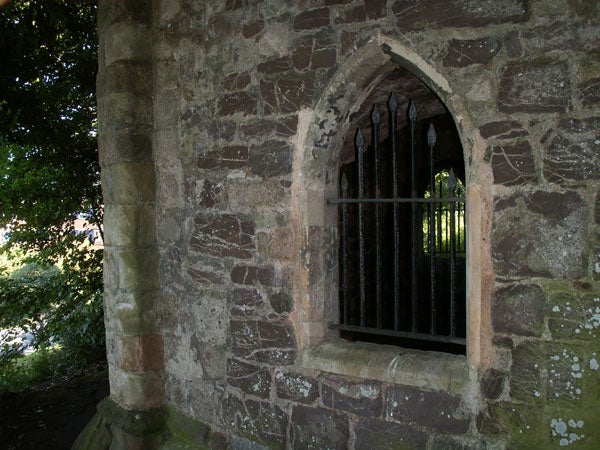
—-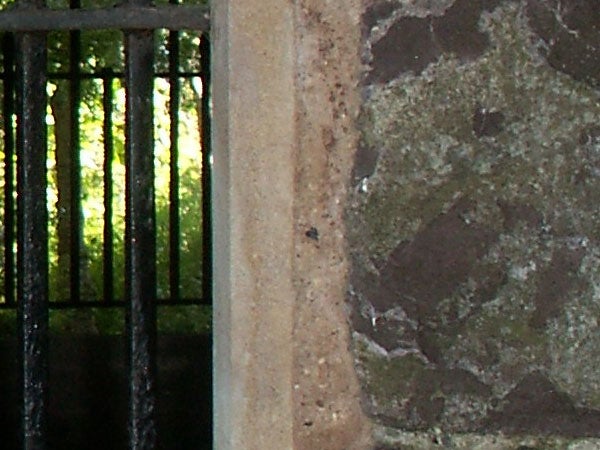
At the minimum setting of 50 ISO, the image is extremely sharp and totally noise-free. The anti-shake takes care of the low shutter speed.
—-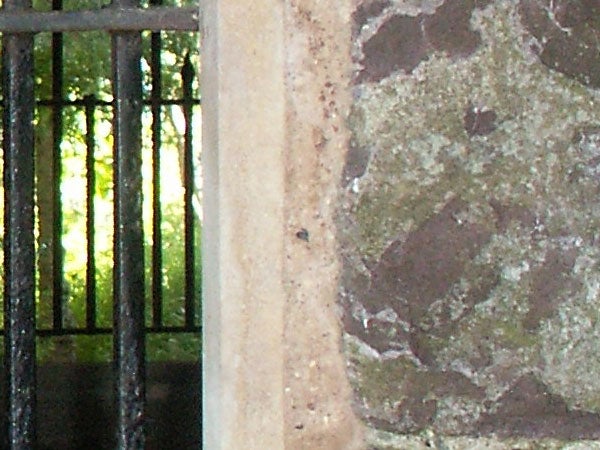
At 100 ISO there is just a hint of noise in the shadow areas of the image, but it isn’t really enough to cause a problem.
—-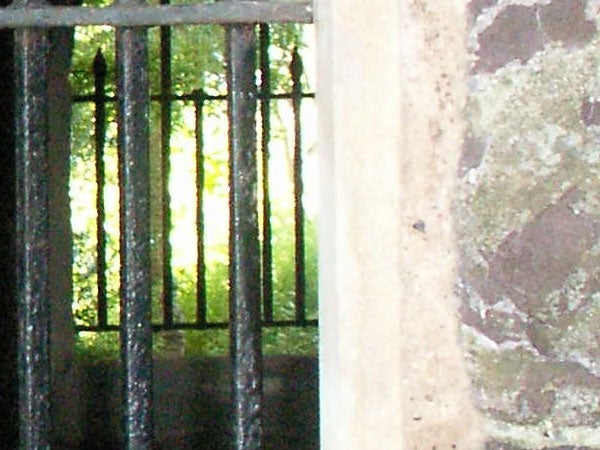
At the maximum 200 ISO setting there is quite a lot of image noise in the darker areas, although lighter areas are noise free.
—-
This page consists of resized images so that you can evaluate the overall exposure

In bright sunlight the Dimage X1 captures colours extremely well, although the highlights on the yellow flowers have burned out
—-

The built-in flash has a range of around 5m, and the exposure system balances it for daylight fill-in
—-
This page consists of resized images so that you can evaluate the overall exposure

Although the lens isn’t ideal for landscape photography, the amazing level of detail from the 8MP sensor more than makes up for it.
—-

With a 5cm super-macro mode, the X1’s close-up performance is excellent, although there is some distortion at the edges of the frame
—-
This page consists of resized images so that you can evaluate the overall exposure

The zoom range equivalent to 37-111mm is a good compromise between wide angle shooting and useful telephoto range.
—-
Zooming in on a detail of the previous shot shows the difference between the widest and longest zoom settings.
—-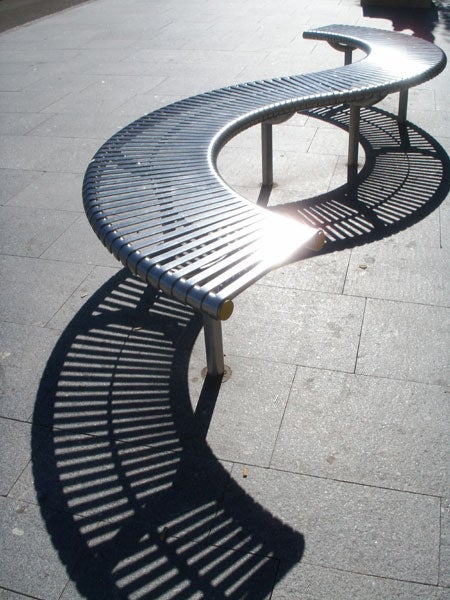
The X1’s exposure system copes fairly well with this extremely high contrast shot, although the highlights are burned out.
—-
Trusted Score
Score in detail
-
Value 7
-
Image Quality 8
Features
| Camera type | Digital Compact |
| Megapixels (Megapixel) | 8.3 Megapixel |
| Optical Zoom (Times) | 3x |

